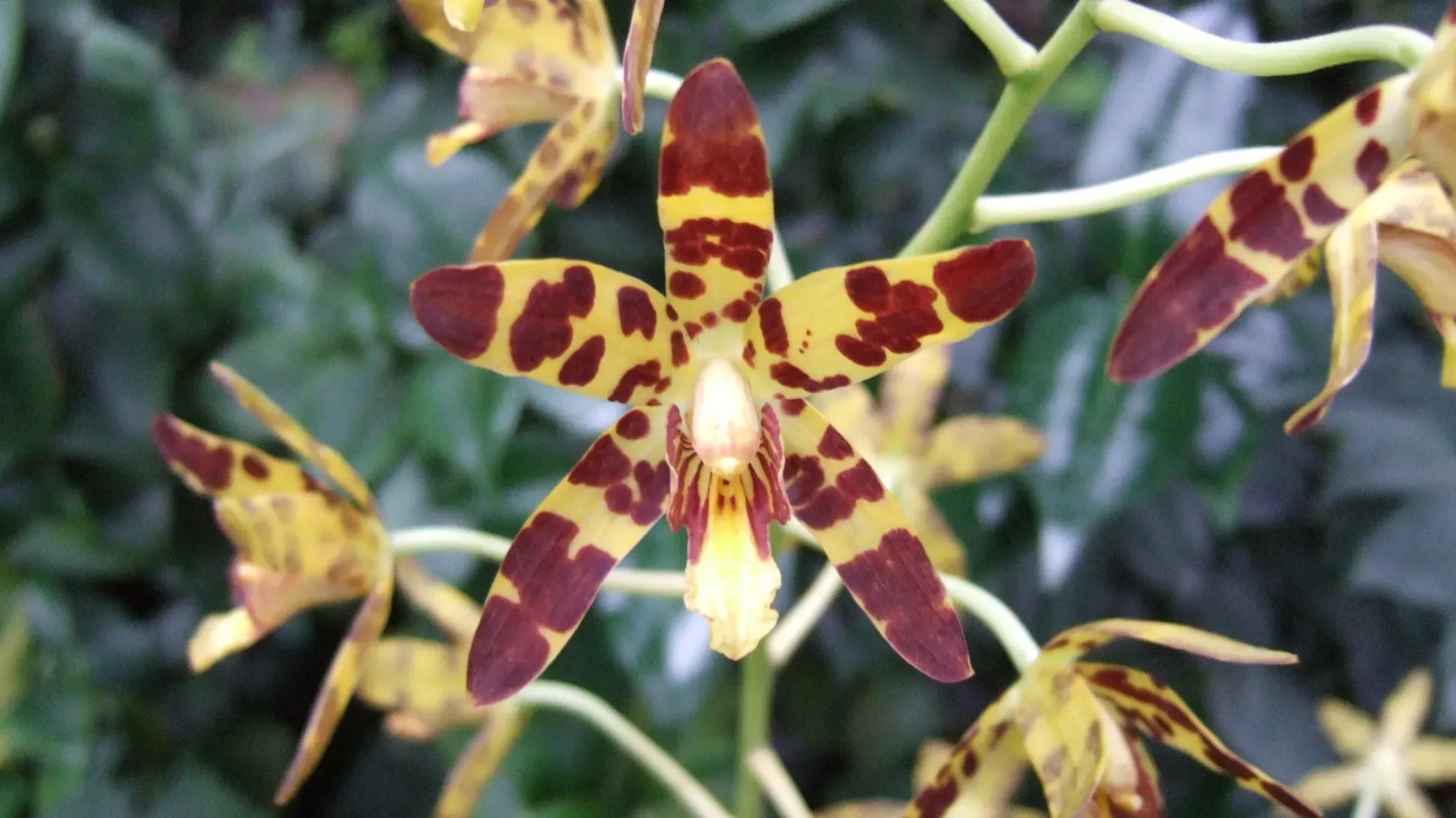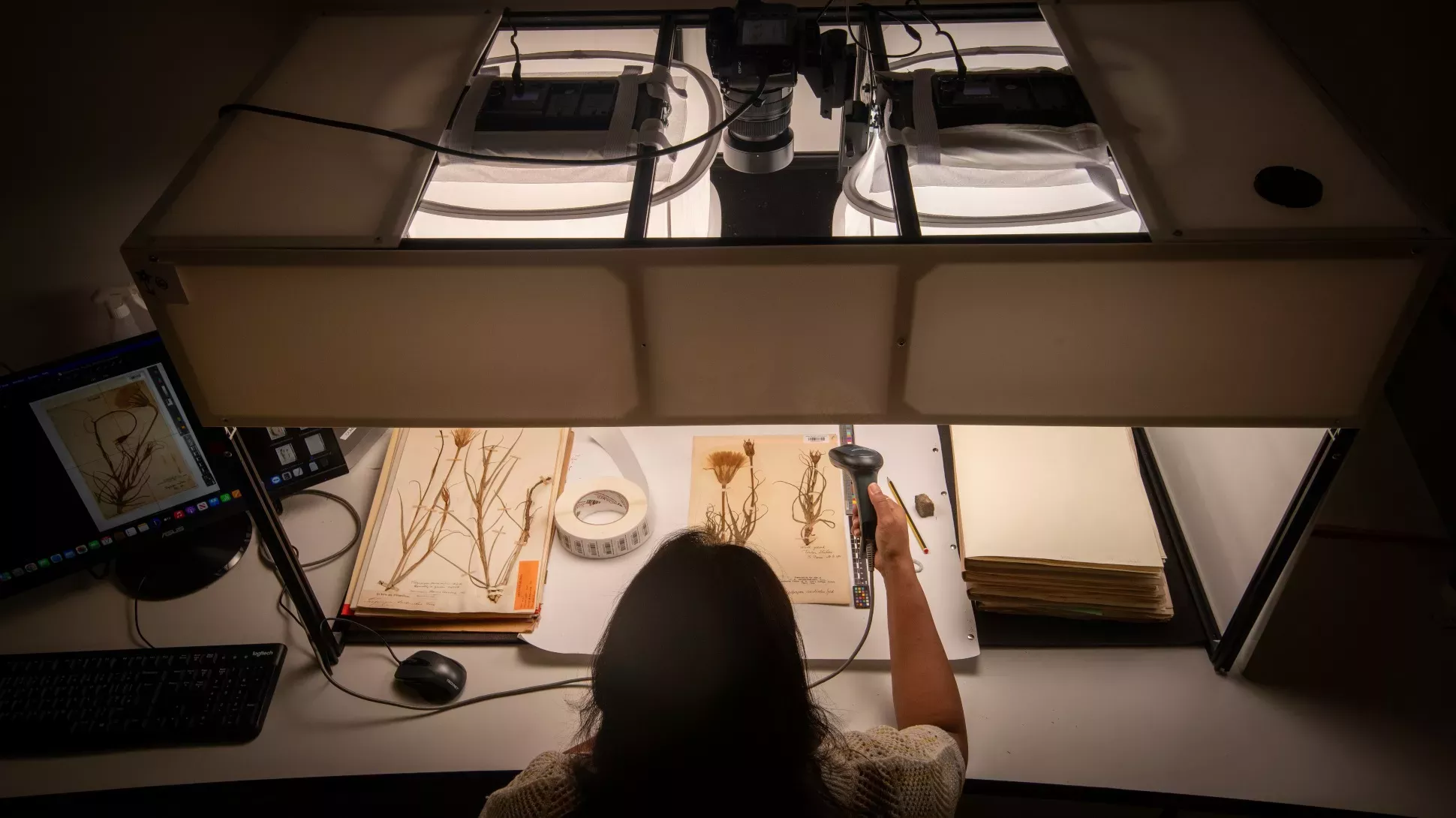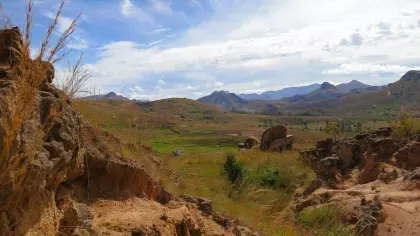22 February 2023
The Orchids of Cameroon Festival: delving into the science
Cameroon has been highlighted as the most botanically diverse country in tropical Africa, with a higher diversity than all other west African countries combined, and a suite of orchids to match.

Orchids represent one of the world’s most extraordinary evolutionary successful plant groups. They can be found in almost every continent and habitat and showcase some of the most peculiar and complex flowers in the plant world.
Unsurprisingly, orchids are proportionally diverse in Cameroon, ranging from small weird mycoheterotrophic species (which do not rely on photosynthesis to survive and instead take nutrients from fungi) to inconspicuously-flowered soil-based species and extravagantly-flowered epiphytes (which grow on top of other plants).
Cameroon is home to some of the world’s most delicate and threatened orchids – some so rare their locations must be kept secret for their protection.
Here in the midst of Orchids 2023, Cameroon, we invite you to take a trip with us through the various breathtaking biomes of Cameroon to learn more about its amazing and unique orchid species and how they are featured by our Science Collection Digitisation Project.

It’s a jungle out there
Cameroon’s flora of ~7000 species is one of the richest floras on the African continent. Of this, 445 species are orchids, making Cameroon the most orchid-rich country in Central Africa.
Cameroon has been relatively well explored for plants compared to most other tropical African countries. However, this exploration has been uneven, and the available information on plant taxonomy (i.e., naming) and distribution greatly limit other efforts, such as conservation actions.
Thus, inspired by the beautiful and biodiverse Cameroon, Orchids 2023 is a vibrant celebration of colour and warmth to brighten up your winter. From lush rainforests in volcanic mountains to cloud forests and arid bushlands, Cameroon’s huge diversity of plants and wildlife is supported by varied habitats, reflected across the ten unique climatic zones within the Princess of Wales Conservatory.

Mind, Body & Soul
Unknown to many, despite being mostly known for their horticultural and ornamental value, orchids are also economically important sources of food and medicine, while some have spiritual relevance.
Many of the national dishes of Cameroon derive from indigenous plant species – from “ndolé” (Vernonia amygdalina, a daisy relative) to “eru” (Gnetum africanum, a peculiar-looking distant relative to pines) and “egusi” (Cucurmeropsis mannii, a bitter-tasting melon). Timber from the forests and oil palm are primary export earners, and fibres and traditional medicines are culturally important.
In Mount Cameroon alone, at least 23 species of orchids are utilised by the region’s communities, with their use ranging from treating stomaches and tuberculosis to preventing nightmares and protection against sorcery. One of them being the leopard orchid (Ansellia africana), which also doubles as a gorgeous ornamental species, featured in both our living and herbarium collections.
The orchids used in Cameroon as food or for medicinal purposes are mostly, if not exclusively, sourced in the wild. This trend highlights a greatly overlooked pressure humans place on these ecologically delicate organisms. Therefore, orchid conservation studies are even more complex, requiring a large amount of data to ensure these unique plants continue to exist and that communities can pass along traditional knowledge to future generations.


Boning up on orchids
The genus Ossiculum, including a single species (O. aurantiacum) known as Beentje’s orchid, was first introduced to science in 1980 by Kew’s very own Dr Henk Beentje, while collecting in the Mungo River Forest Reserve in Cameroon.
The peculiar-looking plant was found without flowers, preventing it from being identified. A cutting was taken to the University of Wageningen, Netherlands, by Dr Beentje, where it flowered for the first time in 1983.
The beautiful bright orange flowers caught the eyes of Kew’s orchid specialist at the time, Dr Phillip Cribb, who described it as not only a new species but also a new genus to science. The scientific name Ossiculum aurantiacum precisely tells this story. Ossiculum comes from the Latin “little bone” as a homage to Dr Beentje since his surname means “little bone” in Dutch, while “aurantiacum” means orange in Latin.
Despite its show-stopping flowers, reminiscent of some Asian species of the genus Vanda, this Cameroonian endemic was not collected again for the following 24 years. Baffling, as several thousand botanical studies have been made in the Mungo River Forest Reserve area over the years.
The lack of recent sightings of this rare orchid species led Kew botanists to assess the species as Critically Endangered for the IUCN Red List at that time.

Rediscovering a lost gem
In 2004, intensive fieldwork in Cameroon focusing on orchids discovered two new localities for O. aurantiacum in the Banyang-Mbo Wildlife Sanctuary.
The plants were found growing in the canopy of large trees in moist lowlands. This discovery of additional locations in Cameroon cast away the fears that Beentje’s orchid might already be extinct and has fostered new studies and a conservation programme dedicated to this species.
This conservation programme was very timely put in place as, recently, an industrial-scale palm oil plantation project was developed in the southwest of the species’ few-known localities. Simultaneously, orchid specialists in Belgium also recorded the occurrence of this species in Democratic Republic of the Congo, expanding its known distribution further. All these efforts resulted in Kew and Meise Botanic Gardens botanists coming together to reassess the conservation status of the species, now considered to be Endangered, following the IUCN criteria.
One of the many new studies that resulted from rediscovering Beentje’s orchid in nature investigated its evolutionary position among closely-related African angraecoid orchids.
Based on the combination of DNA, morphology and chromosome data, botanists were able to confirm the species actually belongs to another genus (Calyptrochilum). The transfer was formalised in a study that also provided much-needed updates on the species’ distribution and ecology.

Turning a new leaf
Differently from what most people tend to believe, most botanists – unfortunately – do not get to spend most of their days and work lives in distant and exuberant forests.
Actually, most of us spend our time working inside collections of dried and pressed plant specimens called herbaria (the plural for herbarium).
Kew houses one of the five largest herbarium collections in the world, which includes an estimated 7 million plant specimens. However, as COVID has made very clear, we don’t always manage to be “on-location”. Furthermore, the specimen(s) that a botanist requires to finish or carry on their research might be halfway around the globe.
For reasons such as this, Kew has started the large-scale digitisation of its biological collections, making sure they are available to anyone anywhere with an internet connection. Aside from aiding botanists to better understand and even discover new species, herbarium collections serve as priceless repositories of biological knowledge. They can help scientists understand species’ distribution, ecological requirements, how they were affected by pests and diseases, etc.

Thus, digitisation encompasses way more than just providing digital access to specimens. It can serve as a vital tool in preventing the extinction of plants and fungi, but also all the animals that rely on them for their existence. Digitising Kew’s Orchid Herbarium represents a unique opportunity, not only to be close to so many plants and historical records but also to play a part in helping preserve nature.
The Digitisation Team started digitising Kew’s Orchid Herbarium on June 2022 and has, so far, imaged and barcoded over 44,600 orchid specimens.
Of these, we have digitised over 300 Cameroonian specimens belonging to nine different orchid genera. Most of these specimens represent members of the weird and peculiar ghost orchid subfamily, but we also have digitised some delicious Vanilla specimens. Once these specimens are available via Kew’s new Data Portal, scientists from around the globe will able to study and make great use of such a unique collection.
Make sure to visit Kew’s Orchid Festival, as well as the Orchids After Hours event, and take with you the science behind the beauty and art.



